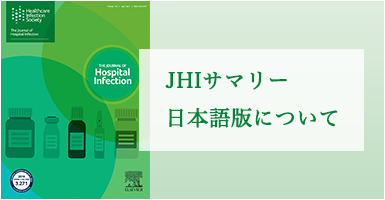整形外科におけるインプラント感染症を減少させる:整形外科インプラント手術後の術後感染に対する温風式加温装置と抵抗性布加温装置の加温技術の影響を比較したパイロット研究の結果
Reducing Implant Infection in Orthopaedics (RIIiO): Results of a pilot study comparing the influence of forced air and resistive fabric warming technologies on postoperative infections following orthopaedic implant surgery
M. Kümin* , J. Deery, S. Turney, C. Price, P. Vinayakam, A. Smith, A. Filippa, L. Wilkinson-Guy, F. Moore, M. O’Sullivan, M. Dunbar, J. Gaylard, J. Newman, C.M. Harper, D. Minney, C. Parkin, L. Mew, O. Pearce, K. Third, H. Shirley, M. Reed, L. Jefferies, J. Hewitt-Gray, C. Scarborough, D. Lambert, C.I. Jones, S. Bremner, D. Fatz, N. Perry, M. Costa, M. Scarborough
* University of Oxford, UK
Journal of Hospital Infection (2019) 103, 412-419
背景
手術中の積極的加温は周術期低体温症を予防するが、有効性と術後感染率は加温技術によって異なる可能性がある。
目的
大腿骨頸部骨折後に人工骨頭置換術を受ける 65 歳超の患者において、温風式加温装置と抵抗性布加温装置が関連している術後感染率を比較する完全な試験に必要な患者登録とデータ管理戦略を確立すること。
方法
置換ブロック法で参加者を温風式加温装置または抵抗性布加温装置に 1 : 1 でランダムに割り付けた。低体温症は手術終了時の体温が 36°C未満として定義した。主要評価項目は、登録された参加者数および確定した深部手術部位感染の件数であった。
結果
18 か月にわたり 6 施設で合計 515 例の参加者をランダム化した。70.1%が経過観察を完了した。37 例の参加者が低体温であった(温風式加温装置群の 7.5%、抵抗性布加温装置群の 9.7%)。麻酔前と手術終了時の平均体温は同様であった。臨床主要評価項目に関し、温風式加温装置群では 4 件、抵抗性布加温装置群では 3 件の深部手術部位感染が生じた。術後感染を発症したすべての参加者は抗菌薬予防投与を受け、セメント人工関節を使用し、層流下で手術を受けた。また、いずれも低体温ではなかった。加温に関連する重篤な有害事象はみられなかった。
結論
手術部位感染は両群で特定された。パイロット試験から完全な試験へと進めることは可能だが、試験中止率の高さを考慮する必要があるだろう。
サマリー原文(英語)はこちら
監訳者コメント:
なし
同カテゴリの記事
Selection of resistance by antimicrobial coatings in the healthcare setting
F. Pietsch*, A.J. O’Neill, A. Ivask, H. Jenssen, J. Inkinen, A. Kahru, M. Ahonen, F. Schreiber
*Federal Institute for Materials Research and Testing, Germany
Journal of Hospital Infection (2020) 106, 115-125
Real-world use of fidaxomicin in a large UK tertiary hospital: how effective is it for treating recurrent disease?
Outbreak of severe sepsis due to contaminated propofol: lessons to learn
Cross-sectional prevalence of SARS-CoV-2 antibodies in healthcare workers in paediatric facilities in eight countries
D. Goldblatt*, M. Johnson, O. Falup-Pecurariu, I. Ivaskeviciene, V. Spoulou, E. Tamm, M. Wagner, H.J. Zar, L. Bleotu, R. Ivaskevicius, I. Papadatou, P. Jõgi, J. Lischka, Z. Franckling-Smith, D. Isarova, L. Grandjean, D. Zavadska
*University College London, UK
Journal of Hospital Infection (2021) 110, 60-66
Two-step glutamate dehydrogenase antigen real-time polymerase chain reaction assay for detection of toxigenic Clostridium difficile



